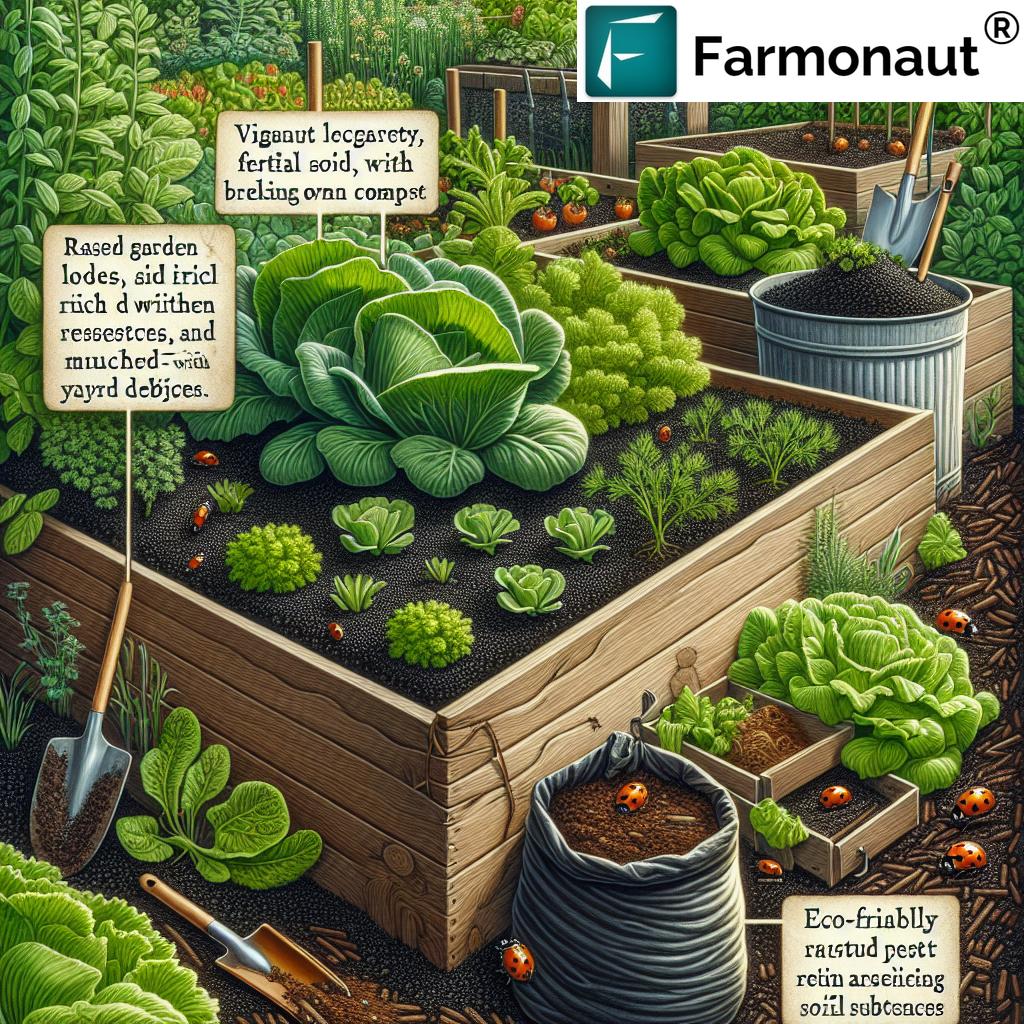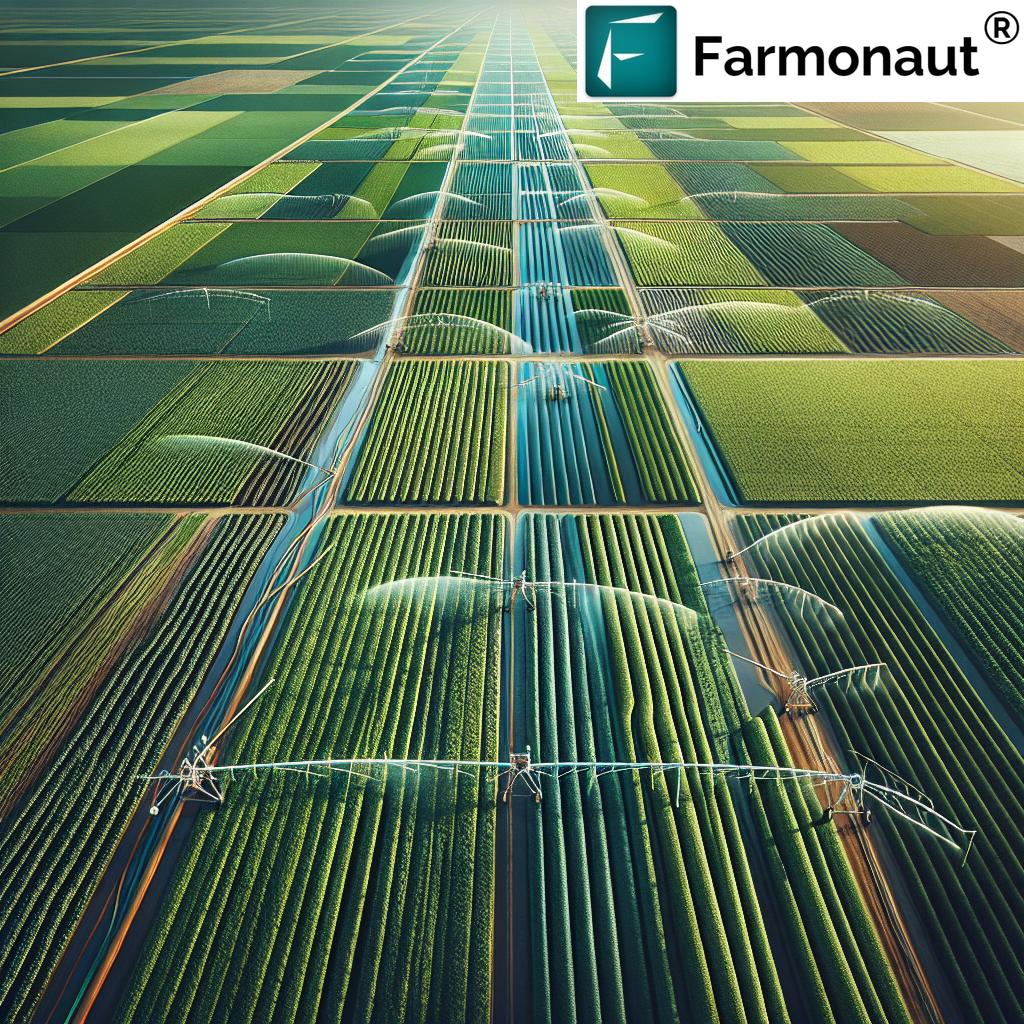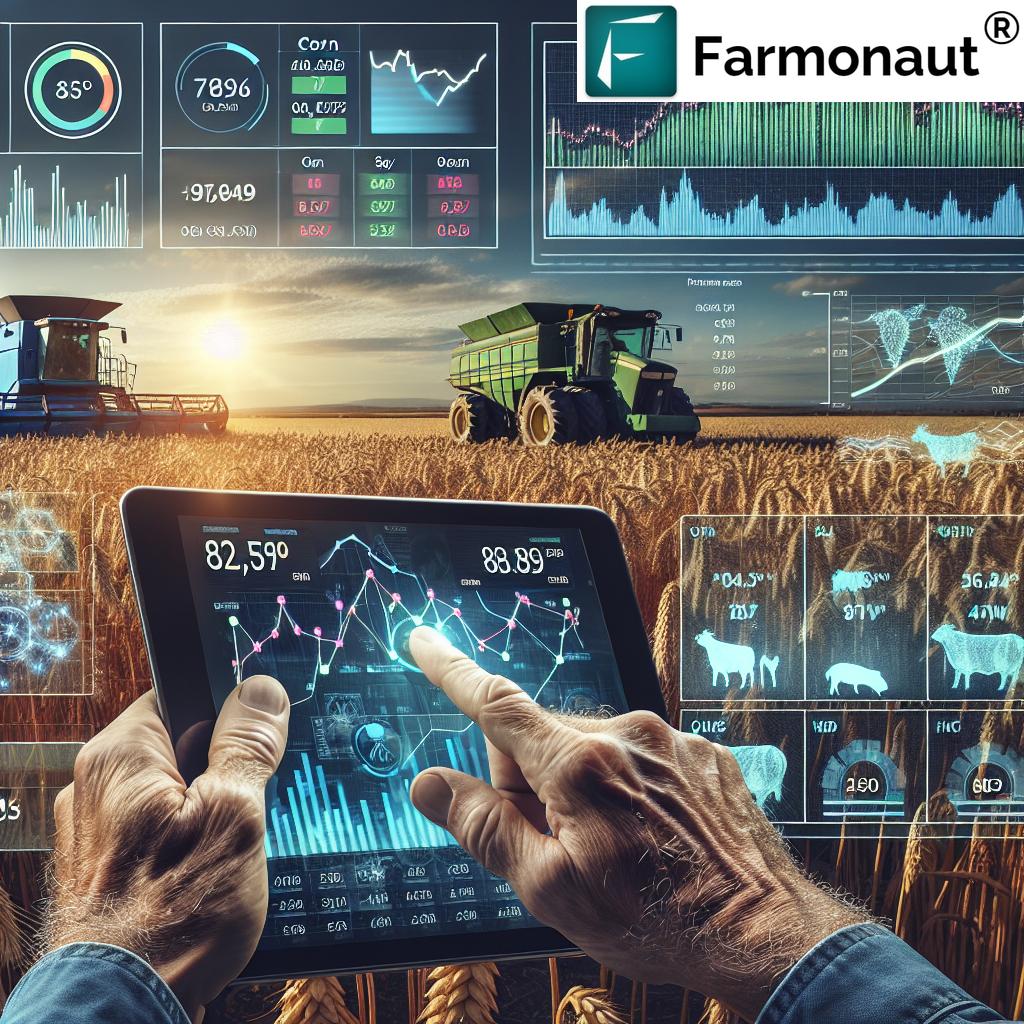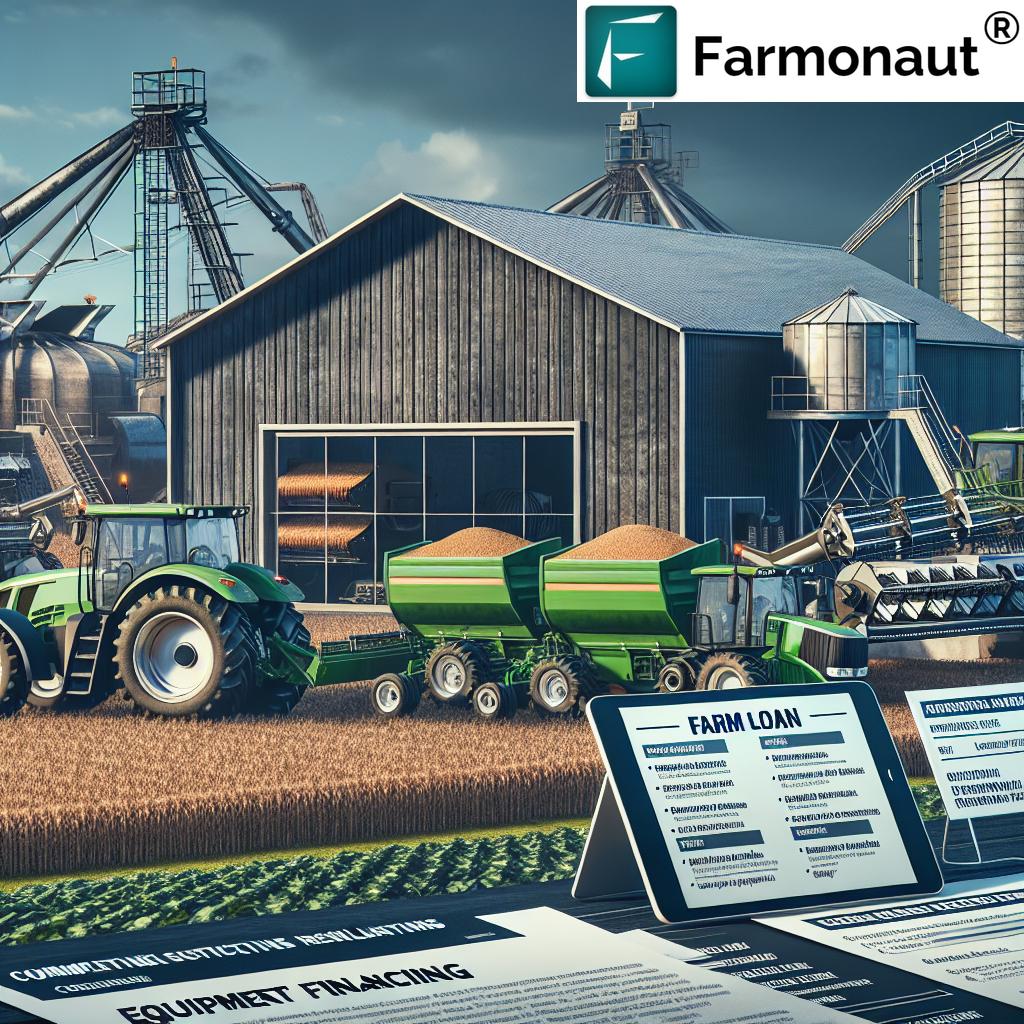Agricultural Supply Chain Transparency 2025: Blockchain, Grants, Demand
Introduction: The New Imperative of Agricultural Supply Chain Transparency
We live in a pivotal era—2025—when the agriculture industry faces unprecedented challenges and opportunities. Shaped by shifting consumer demands, climate variability, and evolving trade policies, the path ahead demands more than incremental change. The very core of this agricultural revolution lies in achieving agricultural supply chain transparency. This is not just a trending concept; it is a central factor determining the quality, sustainability, and resilience of our food systems—especially for the American horticulture supply sector.
This article examines the significance of transparent chains in agriculture, highlighting the current dynamics of agricultural supply and demand, and underscores the pivotal role of innovative technologies—including blockchain functions with supply chain modules—and agricultural grants in fostering sustainable growth within the American horticulture industry, and beyond.
Agricultural Supply and Demand Dynamics in 2025
The agricultural supply and demand balance has never been more intricate than in 2025. Farmers, distributors, and retailers must continuously optimize production and reduce waste to meet both domestic and export market demands. The growing movement towards fresh, locally sourced, and sustainably grown produce shapes today’s horticulture sector. Changes in dietary trends, rapid population growth, and increasing export pressures further influence this delicate equilibrium.
However, the process is often hindered by information asymmetry across the supply chain. Producers may lack timely data about market needs, while retailers and consumers are frequently unaware of the cultivation practices and conditions behind their food. This lack of transparency leads to inefficiencies, post-harvest losses, and missed opportunities to meet evolving consumer demands.
These apps and API-driven solutions empower users with real-time data and insights to navigate these challenges, making agriculture more transparent, data-driven, and sustainable.
The Importance of Agricultural Supply Chain Transparency
Transparency within the agricultural supply chain goes beyond buzzwords. It means achieving visibility and traceability for products from farm all the way to fork. But why does this matter so much in 2025, especially for American horticulture supply?
- Consumer Trust: Transparency empowers consumers with accurate information about product origin, cultivation practices, and handling conditions, building trust and brand loyalty.
- Market Efficiency: Transparent supply chains enable better demand forecasting and inventory management. Retailers can optimize delivery and storage, reducing waste and loss of freshness.
- Reducing Risks: Traceable systems deter fraud, reduce contamination risks, and provide a rapid response mechanism if a food safety incident arises.
- Sustainability: Insights into every stage allow stakeholders to minimize environmental impact and adopt sustainable practices.
- Resilience: In 2025’s climate of variability and evolving trade policies, a transparent chain increases a system’s adaptability and resilience to disruptions.
In summary, achieving agricultural supply chain transparency is paramount for quality assurance, risk management, and sustainability—not only within the American horticulture sector but the entire agricultural industry.
Blockchain and Innovative Functions to Enhance Supply Chain Modules
Blockchain’s Role in Chain Modules for 2025
Blockchain functions with supply chain modules are set to revolutionize agricultural transparency by 2025. Blockchain technology ensures that every transaction and transformation—from seed to final product—is immutable and verifiable. This means each stakeholder, be it the producer, distributor, or consumer, has access to accurate, timely information about origin, handling, and even sustainability certifications.
- Traceability: Blockchain’s decentralized ledger offers complete traceability for every batch of produce.
- Fraud Deterrence: Immutable records deter fraud and mislabeling in the chain.
- Quality Control: Continuous updates allow for rapid identification of compromised batches, reducing contamination risks.
- Smart Contracts: Automated agreements trigger actions (e.g., payments, recalls) based on pre-set criteria, improving efficiency.
For a deeper dive into how blockchain-based traceability can benefit your chain, read more about Farmonaut’s blockchain traceability solutions—designed to empower chain transparency for the American agricultural sector and global supply chains.
Beyond Blockchain: Advanced Technologies in Chain Transparency
While blockchain technology has transformed digital records, true transparency in 2025 utilizes a broader toolkit:
- IoT Sensors: Embedded in soil, storage, and transport modules, IoT networks collect real-time data on temperature, humidity, and quality conditions for fresh horticulture supply.
- AI Analytics: Machine learning models forecast demand, optimize routes, and recommend harvest/packing schedules to minimize waste and meet consumer preferences.
- Cloud Platforms: Aggregate data from various sources to provide a comprehensive dashboard—delivering insights for nodes across the chain: from farmers to retailers.
- Satellite Monitoring: Provides macro-level visibility for large-scale American farms, monitoring crop health, carbon footprint, and resource use.
Integration of these tools creates a scalable, cost-effective system for both large agribusinesses and small/medium horticulture producers. Want to empower your chain using real-time monitoring, AI-based advisory and resource management? Explore Farmonaut’s large-scale farm management tools.
Comparative Table: Technologies & Grants Driving Transparency
| Technology / Grant | Estimated Implementation Year | Core Functionality | Est. Transparency Improvement (%) | Est. Impact on Sustainability | Example Use Case | Projected Demand (2025) |
|---|---|---|---|---|---|---|
| Blockchain Traceability | 2023–2025 | Secure chain-of-custody, batch/product visibility | 70–90% | High | Verifying produce origin and certifications in American horticulture supply export chains | High |
| IoT Monitoring Networks | 2022–2025 | Real-time tracking of storage/transport/field conditions | 60–85% | Medium-High | Reducing post-harvest waste in fresh produce supply | High |
| AI Analytics | 2023–2025 | Demand forecasting and risk identification | 60–80% | Medium | Aligning harvest schedules with market demands in American horticulture supply | High |
| Government Grant 2025 | 2025 | Funding new digital supply chain tools/programs | 50–75% | Medium-High | Farmer co-operatives installing connected supply chain platforms | High |
| Sustainable Farming Grant | 2024–2025 | Subsidizing sustainable and digital agricultural practices | 50–70% | High | Sensor networks for carbon and water footprinting in horticulture production | Medium-High |
Applying for Agricultural Grants in 2025
The Role of Grants in Advancing Transparent Chains
As market pressures intensify, government grant programs and funding mechanisms play a vital role in advancing agricultural supply chain transparency. For 2025, federal and state agencies have prioritized agricultural grants that focus on:
- Digital transition: Supporting rural and urban farms to adopt cloud and IoT-driven solutions for end-to-end supply visibility
- Sustainability: Funding the implementation of eco-friendly production, advanced traceability, and carbon footprinting practices
- Skills development: Granting resources for training farmers and supply chain actors in digital literacy, technology use, and risk management
- Collaborative networks: Encouraging multi-stakeholder platforms for synchronized production, improved logistics, and joint market responses
If you’re a producer or supply chain participant looking to apply for agricultural grant 2025:
- Identify project goals around transparency, quality improvement, or demand optimization.
- Assess your capacity to implement IoT, AI, satellite, or blockchain technology.
- Align proposals with the core focus areas promoted in 2025 grant calls—especially digital integration and sustainability.
- Partner with supply actors for joint applications if feasible to improve supply network resilience.
- Leverage consortiums or advisory platforms to strengthen the technical aspects of your application.
Looking to digitize your farm’s traceability or apply for sustainable agriculture grants that subsidize smart monitoring? Explore Farmonaut’s satellite-based verification tools to both prove environmental stewardship and streamline your grant application process.
Digital Integration Within American Horticulture Supply Chain
Optimizing for Freshness, Quality, and Market Demands
To meet the exacting requirements of American horticulture supply, transparent chain management and digital integration are not just operational upgrades—they are competitive necessities. High-value crops, perishable produce, and export-oriented supply chains face intense pressure to guarantee freshness and quality at every delivery.
- IoT-based Storage Tracking: Real-time monitoring of controlled atmosphere storage mitigates product loss and waste throughout the chain.
- AI-powered Demand Planning: Predictive models account for shifting dietary trends, changing population patterns, and anticipated export policies—optimizing harvest and shipping times.
- Digital Traceability: Platforms that record batch data, certifications, and digital passports, empowering consumers to instantly verify sustainability labeling.
- Cloud-based Coordination: Interconnected stakeholder dashboards for farmers, distributors, and retailers streamline logistics and improve response times to market shifts.
The Fleet Management solution from Farmonaut enables optimization of vehicles and equipment, driving down operational costs, emissions, and inefficiency across the American horticulture sector.
Consumer Trust and Market Opportunities with Chain Transparency
Building Value from Farm to Fork
Trust is paramount in a market shaped by shifting consumer preferences and the demand for ethical, sustainable, and traceable food products. Transparency in the agricultural supply chain becomes a market differentiator in 2025.
- Consumers increasingly check product provenance, certifications, and environmental impact data before purchasing.
- Transparent chains deter fraud, particularly in organic and specialty produce where counterfeiting risks erode brand and market value.
- Export markets now require traceability proof for compliance and tariff benefits, making supply transparency a lever for growth.
Farmonaut’s carbon footprinting and environmental impact monitoring empower agribusinesses to transparently report sustainability credentials—vital when seeking access to new consumer segments or premium markets.
Farmonaut: Enhancing Supply Chain Transparency with Advanced Tools
As a satellite technology leader, we at Farmonaut are deeply committed to empowering agricultural supply chain transparency through our unique blend of satellite-driven insights, AI analytics, and blockchain-based traceability. Our solutions are designed to serve diverse segments:
- Real-Time Monitoring: We provide affordable monitoring of crop health, soil condition, and environmental factors for growers of all scales—delivering insights through our app, web platform, and API (see our agricultural API).
- Jeevn AI Advisory System: Our AI-powered system gives real-time weather forecasting and tailored recommendations for risk mitigation and productivity.
- Blockchain Traceability: We enable product-traceability for the agricultural, mining, and supply chain sectors, ensuring visibility, transparency, and authenticity verification. Learn about our blockchain traceability capabilities.
- Environmental Impact Tools: Our satellite solutions help monitor carbon footprints and environmental data for regulatory compliance and sustainability reporting.
- Fleet and Resource Management: We enable digital resource management to optimize operations, reduce waste, and improve chain efficiency. Read more about our fleet management solution.
Our modular, subscription-based platform enables scaling across small farms, large agribusiness, and agency applications. Explore our API developer docs for seamless integration.
Try our platform by downloading our mobile applications or using our web dashboard for industry-leading transparency and data-driven horticultural growth:
Conclusion: A Pathway to Sustainable Growth
Enhancing agricultural supply chain transparency in 2025 is not an aspiration—it is a requirement for thriving in an era of climate variability, complex trade policies, and shifting consumer values. The combination of advanced digital tools, blockchain traceability, and targeted grant programs is unlocking a new era of resilience, efficiency, and market access for the American horticulture supply chain and beyond.
As data becomes the new currency for sustainable agriculture, adoption of transparent chain models will determine which producers and distributors not only survive but lead the future. Transparent chains allow all stakeholders—farmers, retailers, distributors, and consumers—to make data-driven decisions, reduce waste, prove sustainability, and achieve greater value from every stage.
The rapidly growing portfolio of agricultural and sustainable farming grants only accelerates this momentum, making it possible for every farm, big or small, to join the digital revolution.
For 2025 and the decade ahead, the agricultural sector’s ability to pivot, adapt, and thrive will be directly linked to its commitment to transparency, sustainability, and innovation.
Frequently Asked Questions (FAQ)
What does agricultural supply chain transparency mean?
Agricultural supply chain transparency refers to the ability to track, trace, and verify every stage and stakeholder involved in moving a product—from farm, through processing and distribution, all the way to the final consumer. This visibility includes data on origin, cultivation, handling, storage, and transport, helping all parties ensure product quality, safety, and sustainability.
How does blockchain technology improve supply chain transparency?
Blockchain technology creates an immutable, decentralized record of all chain transactions and transformations. This ledger allows every stakeholder to access truthful, real-time information about the product’s origin, certifications, and journey through the supply chain—enhancing trust, deterring fraud, and enabling rapid response to quality or safety issues.
Why are agricultural grants important for transparency in 2025?
Grants lower the financial barriers to adoption of digital technologies—like IoT, AI, and blockchain—helping farmers and distributors upgrade supply chain modules. They also fund training, infrastructure, and collaborations, fostering resilience and sustainability across the American horticulture supply sector.
How can Farmonaut help stakeholders with supply chain transparency?
We at Farmonaut offer satellite-based monitoring, blockchain-based traceability, AI-powered advisory, and resource/fleet management solutions designed for agricultural, horticultural, and supply chain stakeholders. Our technology enables real-time insights, improves decision-making, and empowers transparent reporting on sustainability, all at an affordable price and with scalable service packages.
What is the projected demand for transparency solutions in the American horticulture industry by 2025?
By 2025, demand for technologies—such as blockchain traceability, IoT monitoring, and AI-driven planning—is projected to be high across the American horticulture supply sector. Export requirements, consumer expectations, and competitive market advantages are all driving rapid adoption of transparency solutions.
Ready to enhance your supply chain transparency for 2025?
Get started today:











